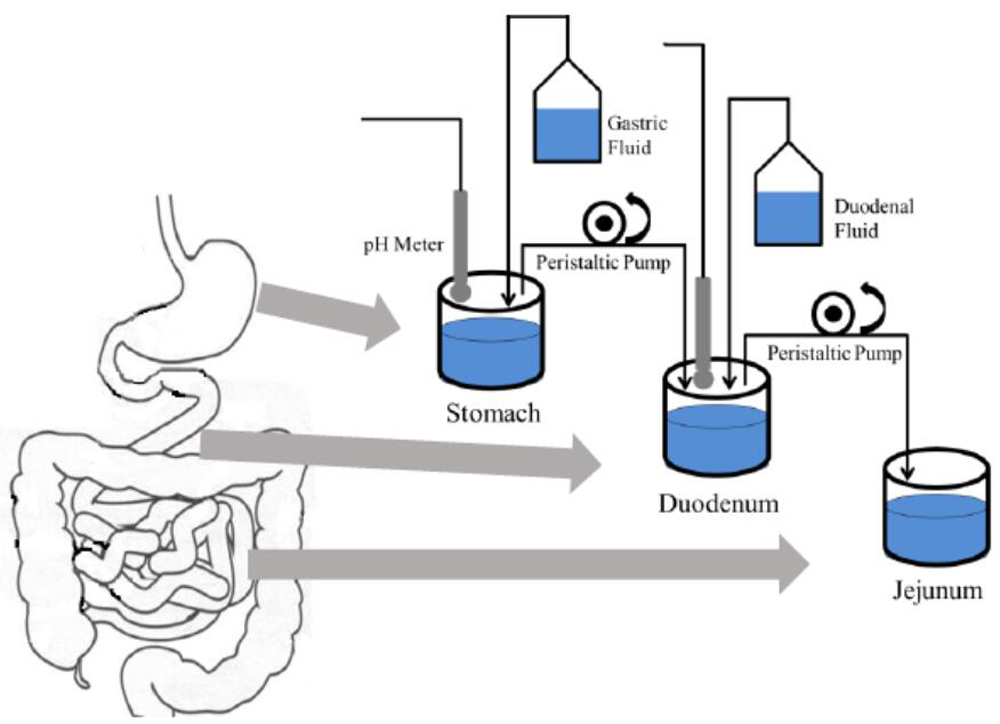

Frontiers of Chemical Science and Engineering >
Oral product input to the GI tract: GIS an oral product performance technology
Received date: 18 Nov 2016
Accepted date: 15 Apr 2017
Published date: 06 Nov 2017
Copyright
The patient receives a pharmaceutical product, not a drug. The pharmaceutical products are formulated with a drug, an active ingredient to produce the maximum therapeutic effect after oral absorption. Therefore, it is the product we must optimize for the patients. In order to assure the safety and efficacy of pharmaceutical products, we need an in vivo predictive tool for oral product performance in patients. Currently, we are a surprisingly long way from accomplishing that objective. If the 20th century was the ‘age of the drug’, i.e., the ‘magic bullet’, the 21st century must become the ‘age of the guided missile’, i.e., the delivery system, including the form of the active pharmaceutical ingredient (API) (‘drug’). The physical form of the drug and the delivery system must be optimized to maximize the therapeutic benefits of pharmaceutical products for humans. Oral immediate release (IR) dosage forms cannot be optimal for all drugs or likely even any drugs (APIs). Still, the formulation of pharmaceutical products has to be optimized for patients. But how do we optimize oral delivery of drugs? It is usually through ‘trial and error’, in humans! We need a better way to optimize the oral dosage forms. We have suggested to select different dissolution methodologies for this optimization based on BCS Subclasses. In this article, we present the predicted in vivo drug dissolution profile of ketoconazole as a model drug from our laboratory utilizing a gastrointestinal simulator (GIS), which is an adaptation of the ASD system. GIS consists of three chambers representing stomach, duodenum, and jejunum, to create the human gastrointestinal tract-like environment and enable the control the gastric emptying rate. This dissolution system allows the monitoring of the drug dissolution phenomena and the observation of the supersaturation and the precipitation of pharmaceutical products, which is useful information to predict in vivo dissolution of pharmaceutical products. This system can provide the actual input needed to accurately predict the input into the systemic circulation required by many of the absorption prediction packages available today.

Gordon L. Amidon , Yasuhiro Tsume . Oral product input to the GI tract: GIS an oral product performance technology[J]. Frontiers of Chemical Science and Engineering, 2017 , 11(4) : 516 -520 . DOI: 10.1007/s11705-017-1658-7
| 1 |
Tsume Y, Mudie D M, Langguth P, Amidon G E, Amidon G L. The Biopharmaceutics classification system: Subclasses for in vivo predictive dissolution (IPD) methodology and IVIVC. European Journal of Pharmaceutical Sciences, 2014, 57: 152–163
|
| 2 |
Bhattachar S N, Perkins E J, Tan J S, Burns L J. Effect of gastric pH on the pharmacokinetics of a BCS class II compound in dogs: Utilization of an artificial stomach and duodenum dissolution model and GastroPlus, simulations to predict absorption. Journal of Pharmaceutical Sciences, 2011, 100(11): 4756–4765
|
| 3 |
Carino S R, Sperry D C, Hawley M. Relative bioavailability estimation of carbamazepine crystal forms using an artificial stomach-duodenum model. Journal of Pharmaceutical Sciences, 2006, 95(1): 116–125
|
| 4 |
Carino S R, Sperry D C, Hawley M. Relative bioavailability of three different solid forms of PNU-141659 as determined with the artificial stomach-duodenum model. Journal of Pharmaceutical Sciences, 2010, 99(9): 3923–3930
|
| 5 |
Castela-Papin N, Cai S, Vatier J, Keller F, Souleau C H, Farinotti R. Drug interactions with diosmectite: A study using the artificial stomach-duodenum model. International Journal of Pharmaceutics, 1999, 182(1): 111–119
|
| 6 |
Matsui K, Tsume Y, Amidon G E, Amidon G L. In vivo dissolution of fluconazole and dipyridamole in gastrointestinal simulator (GIS), predicting in vivo dissolution and drug-drug interaction caused by acid-reducing agents. Molecular Pharmaceutics, 2015, 12(7): 2418–2428
|
| 7 |
Matsui K, Tsume Y, Amidon G E, Amidon G L. The evaluation of in vitro drug dissolution of commercially available oral dosage forms for itraconazole in gastrointestinal simulator with biorelevant media. Journal of Pharmaceutical Sciences, 2016, 105(9): 2804–2814
|
| 8 |
Mudie D M, Shi Y, Ping H, Gao P, Amidon G L, Amidon G E. Mechanistic analysis of solute transport in an in vitro physiological two-phase dissolution apparatus. Biopharmaceutics & Drug Disposition, 2012, 33(7): 378–402
|
| 9 |
Polster C S, Atassi F, Wu S J, Sperry D C. Use of artificial stomach-duodenum model for investigation of dosing fluid effect on clinical trial variability. Molecular Pharmaceutics, 2010, 7(5): 1533–1538
|
| 10 |
Takeuchi S, Tsume Y, Amidon G E, Amidon G L. Evaluation of a three compartment in vitro gastrointestinal simulator dissolution apparatus to predict in vivo dissolution. Journal of Pharmaceutical Sciences, 2014, 103(11): 3416–3422
|
| 11 |
Tsume Y, Takeuchi S, Matsui K, Amidon G E, Amidon G L. In vivo dissolution methodology, mini-gastrointestinal simulator (mGIS), predicts better in vivo dissolution of a weak base drug, dasatinib. European Journal of Pharmaceutical Sciences, 2015, 76: 203–212
|
| 12 |
Vatier J, Malikova-Sekera E, Vitre M T, Mignon M. An artificial stomach-duodenum model for the in-vitroevaluation of antacids. Alimentary Pharmacology & Therapeutics, 1992, 6(4): 447–458
|
| 13 |
Huang Y C, Colaizzi J L, Bierman R H, Woestenborghs R, Heykants J. Pharmacokinetics and dose proportionality of ketoconazole in normal volunteers. Antimicrobial Agents and Chemotherapy, 1986, 30(2): 206–210
|
| 14 |
Van Tyle J H. Ketoconazole. Mechanism of action, spectrum of activity, pharmacokinetics, drug interactions, adverse reactions and therapeutic use. Pharmacotherapy, 1984, 4(6): 343–373
|
/
| 〈 |
|
〉 |